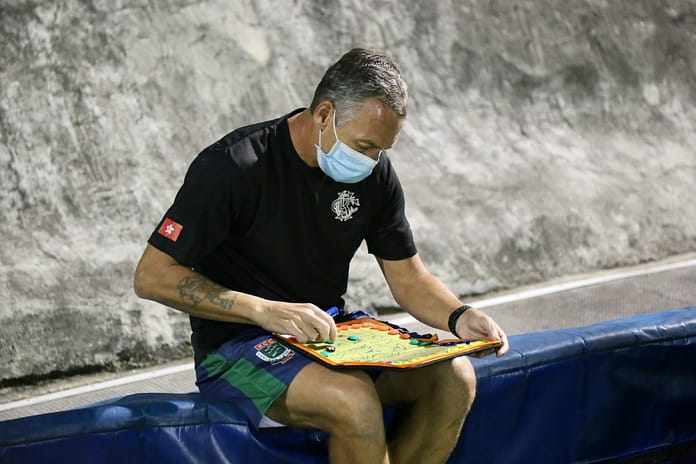Formations in football are never just numbers on paper. They represent the economic power of a club, the type of players it can attract, and the culture of work it builds around the game. The 3-5-2 system, which was once considered outdated, has made a strong comeback across the football world. Today it serves as a survival mechanism for low budget clubs and at the same time as a flexible tool for the richest teams on the planet.
“The 3-5-2 system has evolved from an outdated idea into one of the most balanced and versatile tactical structures in modern football.”
Atalanta: The Low Budget Model
Atalanta has become one of the most fascinating case studies in modern European football. The club relies on discovering undervalued players and investing minimal resources in transfers. Instead of building around individual stars, Atalanta maximizes its collective output through the 3-5-2 system. The compact structure, constant pressing, and balance between defense and attack allow them to compete with clubs whose budgets are multiple times larger. Their consistency in Serie A and impressive Champions League campaigns show how discipline and teamwork can replace raw spending power. Atalanta proves that success is possible when the system is stronger than the individuals.
Arsenal: The Billion Euro Contrast
In contrast, Arsenal has spent more than one billion euros in the last few years. Their default structure is based on a back four, but they have often shifted into a back three when situations demanded it. This shows that for a wealthy club, 3-5-2 is not a necessity but a luxury. At home it allows managers to add more attacking players and create overwhelming pressure on the opponent. In difficult away matches, it becomes a tool for defensive stability and control. This contrast highlights how the same formation can be used in completely different ways depending on financial power, squad depth, and objectives.
The Identity of 3-5-2
The teams that rely on 3-5-2 usually share a common identity. They are compact, organized, and built on collective work rather than unpredictable moments of individual genius. Modern football has moved away from relying on tricky, flashy players who can change a match in one move. The game is now shaped by running distances, predictable movements, physical duels, and speed. Finding a truly intelligent playmaker who can consistently break down defenses has become as rare as finding a diamond in a mine. As a result, clubs increasingly prioritize fast, strong, and agile players who can fit into tactical systems with discipline. The 3-5-2 system captures this modern shift while still leaving a place for creativity inside a collective framework.
Why 3-5-2 Matters Today
This system matters because it brings balance and adaptability. For smaller clubs, it is almost a forced choice. Without collective effort and compact structure, they cannot survive against bigger opponents. For richer clubs, it is a flexible option that lets them add an extra attacker without losing stability. It blends raw athleticism with tactical creativity and ensures that the weaknesses of one player are covered by the strengths of another.
Atalanta’s 3-5-2 in Detail
The back three begins with a central defender who often dictates the first phase of buildup and sets the tempo of possession. On either side, the wide centre backs are not just traditional stoppers but hybrid players who step out wide, support the wing backs, and press opposition wingers. This creates both stability in defense and width in attack.
The wing backs are the true engines of the team. In possession they stretch the field, provide constant vertical runs, and attack the final third. In defense they drop deep to form a back five. Their role demands extreme physical output and tactical awareness. Atalanta has built much of its identity around this position, with players like Robin Gosens and Hans Hateboer showing how decisive wing backs can be in modern football.
The midfield trio is a balance of roles. There is a holding midfielder who protects the defense and serves as a link in possession. There is a box to box midfielder who covers distance, supports both ends of the pitch, and maintains intensity. And there is an advanced midfielder who floats behind the strikers, arriving late in the box and connecting with the forward line. This triangle allows Atalanta to press aggressively and still maintain creativity in transitions.
The forward line usually consists of two complementary profiles. One is a physical reference striker who holds up the ball and occupies defenders. The other is a mobile, opportunistic forward who uses movement and pace to exploit spaces. This partnership destabilizes defenses through constant pressure, rotations, and combinations.
The Key Features of Atalanta’s 3-5-2
The system thrives on relentless pressing, especially in the middle third. It is flexible, shifting from 3-5-2 in possession to 5-3-2 when defending and even 3-4-1-2 when chasing goals. The tempo is always high, with heavy emphasis on distance covered, repeated sprints, and compact spacing. It is a structure that prioritizes teamwork over star power and proves that consistent results can be achieved without global superstars.
“In a football world defined by spending power, the 3-5-2 reminds us that structure and discipline can still close the gap between giants and underdogs.”
Conclusion
The global return of 3-5-2 is not a coincidence. It offers a solution across the entire financial spectrum. For smaller clubs it is survival. For larger clubs it is a weapon of flexibility. It reflects the evolution of football towards athleticism, intensity, and tactical discipline, while still giving room for flashes of creativity within a collective framework. 3-5-2 is no longer a relic of the past. It is a mirror of the present and perhaps the system that will shape the future of the game.

